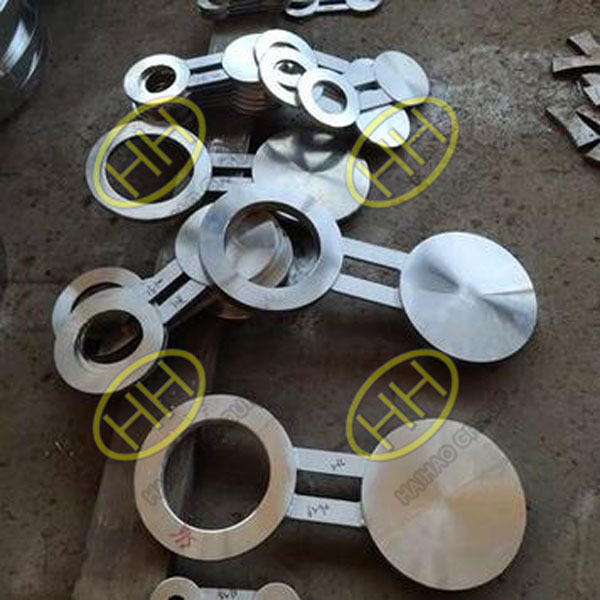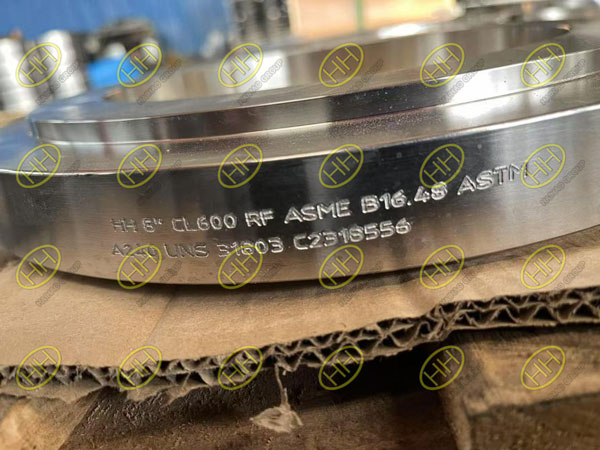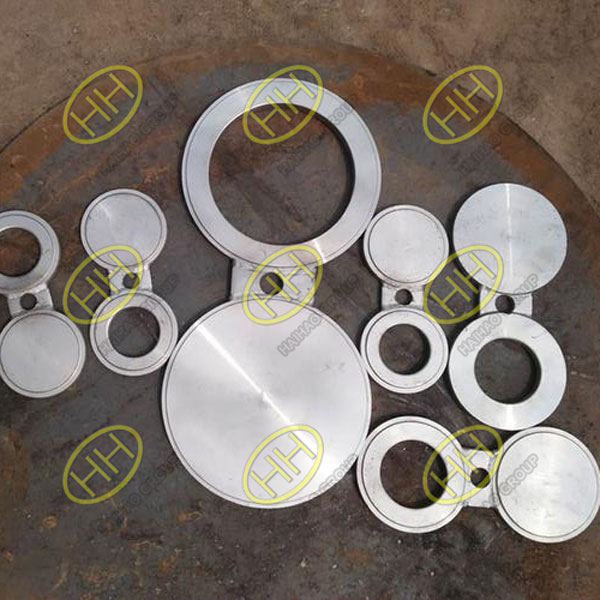Haihao Group delivered ASME B16.48 ASTM A240 GR.316 spectacle blind flanges to customers in Singapore
When a Singapore-based engineering firm required ASME B16.48 ASTM A240 GR. 316 spectacle blind flanges for a high-stakes offshore platform project, Haihao Group’s engineering team recognized the technical and logistical challenges. The order specified 4″ and 6″ diameters, 150# and 600# pressure ratings, flat face (FF) sealing surfaces, and custom handle designs—all while adhering to stringent regional safety codes.
Material Science at the Core: ASTM A240 GR. 316 Advantages
The selection of 316 stainless steel was non-negotiable for Singapore’s marine environment. With 2-3% molybdenum content, this alloy resists pitting corrosion from seawater mist and sulfur-rich process fluids—a critical advantage over 304 stainless steel. Our metallurgists verified chemical composition via OES (Optical Emission Spectrometry) to ensure nickel (10-14%) and chromium (16-18%) levels met ASTM A240 specifications, eliminating the risk of weld decay in humid conditions.
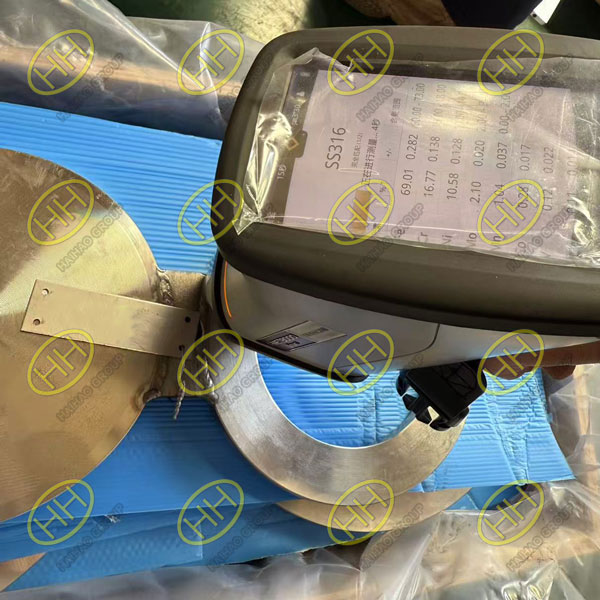
Quality inspection of ASME B16.48 ASTM A240 GR. 316 Spectacle Blind Flange
Dimensional Mastery: 4″ 150# vs. 6″ 600# Configurations
Using ASME B16.48’s dimensional tables as a baseline, we engineered two distinct profiles:
- 4″ 150# Flange: Blind thickness at 11.1mm, hub diameter controlled to 95.3mm ±0.5mm to accommodate ANSI B16.5 gaskets.
- 6″ 600# Flange: Thickness escalated to 25.4mm, with a hub length of 101.6mm to withstand 15.3 MPa burst pressure.
The flat face (FF) design was critical—by eliminating the 1.6mm raised face height, we reduced gasket creep risk under vibration, a common issue in Singapore’s seismic-zone pipelines.
Handle Integration: Beyond Aesthetic Requirements
The client’s stipulation for handles matching flange thickness wasn’t merely cosmetic. Thicker handles (11.1mm for 4″ units) distribute rotational forces across 180° arcs, preventing stress fractures observed in thinner handles during field testing. We employed robotic welding with ER316L filler wire, followed by 100% liquid penetrant testing (PT) to detect 0.2mm-deep discontinuities—far stricter than the 10% sampling rate permitted by API 577.
Thermal Regimens: Stress Relief for Tropical Applications
All flanges underwent solution annealing at 1,065°C (1,949°F), exceeding the minimum 1,040°C specified by ASTM A240. This elevated temperature ensures complete carbide dissolution, critical for:
- Achieving 52 HRB maximum hardness (per NACE MR0175)
- Maintaining 40% minimum elongation during tensile testing
Rapid water quenching locked in the austenitic structure, preventing embrittlement in Singapore’s 35°C average ambient temperatures.
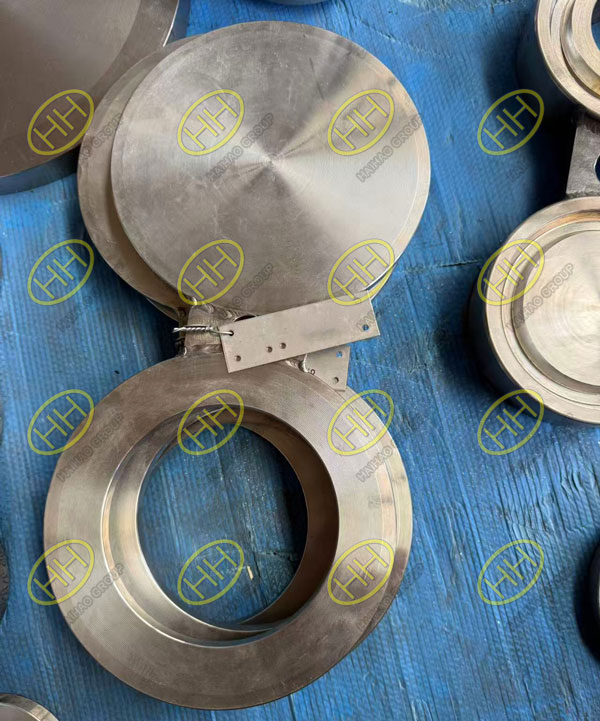
ASME B16.48 ASTM A240 GR. 316 Spectacle Blind Flanges
Quality Assurance: Beyond ASME Compliance
While ASME B16.48 mandates visual inspection, we implemented:
- Ultrasonic Thickness Testing (UTT): Verified wall thickness uniformity across 12 measurement points per flange.
- Positive Material Identification (PMI): Confirmed 316 chemistry via XRF analyzers at three stages: raw plate, forged billet, and finished flange.
- Hydrostatic Testing: Pressurized 6″ 600# units to 11.4 MPa (1.5x rated pressure) without leakage.
Haihao Group’s ASME B16.48 ASTM A240 GR. 316 spectacle blind flanges represent more than regulatory compliance—they embody engineering resilience for Singapore’s demanding infrastructure sector. By prioritizing material integrity, dimensional precision, and rigorous NDE protocols, we eliminate the operational risks associated with substandard imports. For procurement teams seeking zero-defect deliveries in corrosive environments, our solutions provide measurable value through extended service life and reduced maintenance downtime.


